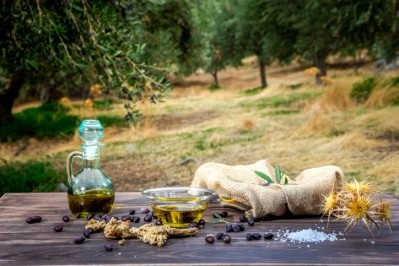Duck duck…goose? Meat fraud amongst breaches revealed in foie gras investigation

In 2019, France’s consumer and fraud watchdog undertook an investigation to determine whether foie gras products were adhering to laws on composition and labelling.
The results were concerning: over 40% of the foie gras blocks tested contained too much water, and more than half of the pre-prepared food products containing foie gras did not confirm to regulation.
Now, two years later, the Directorate-General for Competition, Consumer Affairs and Fraud Control (DGCCRF) has again analysed France’s famed product, concluding that ‘despite some progress’, anomalies persist.
Qu’est-ce que c’est?
Foie gras is a well-known French delicacy consumed the world over. Made from the liver of a duck or goose, its method of production is controversial: to fatten the birds ahead of slaughter, they are force-fed with more food than they would naturally eat in the wild.
As per France’s decree no. 93-999 of August 9, 1993, which outlines the definition of foie gras-based preparations, the foie gras must come exclusively from geese or ducks fattened by force-feeding so as to cause, in the animal, an accumulation of triglycerides in the cells of the liver, which is called hepatic steatosis.
Pure foie gras products are termed ‘whole foie gras’, ‘foie gras’, or ‘block of foie gras’, whereas preparations containing more than 50% foie gras are known as goose or duck liver ‘parfaits’, ‘medallions’, ‘galantines’, or ‘mousse’.
For products containing more than 20% foie gras, terms ‘with goose liver’ or ‘with duck liver’ may be used.
In 1995, the European Commission decided that that the weight of duck foie gras must be greater than 300g, rather than the previous 250g. And in 2000, ‘Duck foie gras from the southwest’ was granted Protected Geographical Indication (PGI).
Labelling laws
DGCCRF investigators checked the labelling information and traceability of products from duck and geese during 57 visits to 50 farms, retail businesses, wholesale businesses, exports, online sales and street vendors.
A total of 46% of the establishments investigated were found to have an anomaly. The most common breaches related to labelling rules and the misleading of consumers.
Some processors were unaware of the composition rules associated with the names authorised for foie gras based preparations, with ‘foie gras mousse’ being used to market products that did not respect the necessary percentage of foie gras.
Anomalies in ingredients lists were also observed, with the presence of unauthorised additive potassium nitrate in some products. Elsewhere, products lacked the full amount of specific ingredients listed on-pack.
Concerns were also raised by the consumer and fraud watchdog regarding the term ‘French origin’. In some cases, it was not possible to check whether the foie gras product had, indeed, come from France. These operators were penalised.
Further, the investigators found that PGI logos were misused in cases where manufacturers did not adhere to the specifications required of the indication.
Spotlight on composition
Compositionally, the foie gras products did not score much better. Overall, non-compliance rate for foie gras blocks totalled 28%, and for foie gras products, 75%.
Eighteen fatty liver block samples and eight liver-based products were analysed by DGCCRF to test their composition – including HPD (moisture) level, lipid/protein ratio, and exuded fat – and net mass.
A total of 11 products, including two under PGI, contained at least one anomaly, the watchdog found. Five blocks and one liver product were found to contain excessive moisture.
In four foie gras products, the amount of liver was below the regulatory minimum, and one foie gras product was found to contain an excessive fat content.
Greater than 1% duck was detected in a product marketed as goose liver.
Further, in foie gras blocks, 28% of samples analysed contained an excessive proportion of water.
In total, 22 warnings and seven injunctions were sent to business operators. One administrative fine was issued for a non-compliant block of foie gras, and two criminal reports were sent to the public prosecutor’s office for blocks of non-compliant foie gras containing excessive moisture.






























